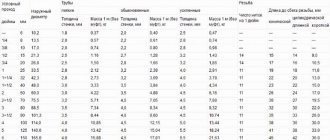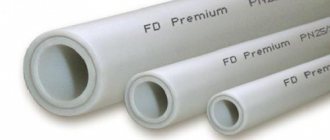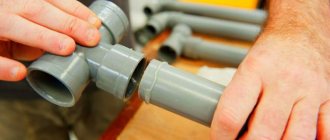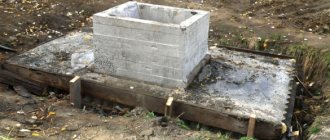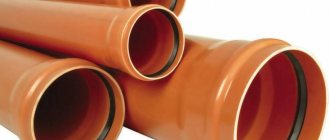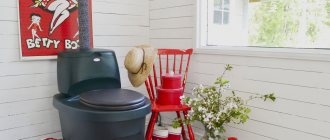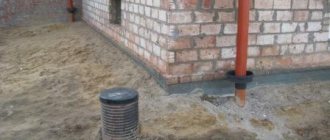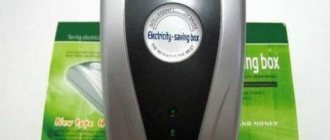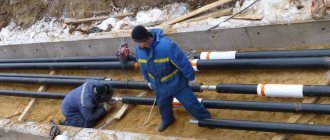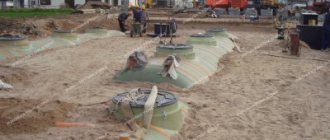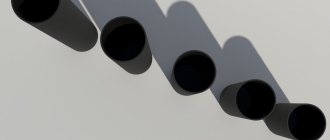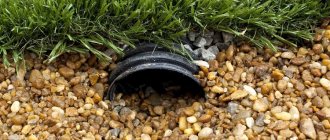Residents of multi-storey buildings most often do not pay attention to where the water goes after a rainstorm or during the melting of snow. But the problem of storm water drainage must be fully resolved by the owners of private houses.
We welcome our regular reader and offer him an article about what pipes are used for storm drainage.
We want to live in a clean, well-kept house, without puddles and puddles on the paths, streaks on the walls, stagnant liquid in the garden, on the surface of the beds and flower beds after a rainstorm. All these problems are solved by a drainage system consisting of surface water intakes and a pipeline system for discharging wastewater into the municipal sewer.
Storm drainage system
Storm drainage or rainwater drainage is a sewerage system designed to organize the rapid removal of precipitation or melt water. In cities and large comfortable settlements, there are collectors, which are connected to local systems for draining atmospheric water from various objects - residential buildings, workshops, warehouses, farms, public buildings, streets and sidewalks, private houses.
Storm drainage can be of the following types:
- Open - storm water is drained using special trays or gutters, open ditches, canals, irrigation ditches.
- Closed, or deep - wastewater, after being collected in trays, enters wells and, using a system of underground pipelines, is discharged into natural reservoirs (rarely to treatment plants).
- Mixed - part of the system consists of closed pipelines, part consists of open trays and channels.
Local systems are divided into point and linear.
It should be borne in mind that the installation of surface storm drainage in no case replaces the installation of wall drainage around the foundation of buildings. Such drainage is installed below the freezing level to protect buildings from groundwater.
Open and deep storm drain
An open storm drainage system consists of drainage ditches and channels, storm drains from trays with gratings, storm water inlets for vertical drainage of drainage systems on buildings, wells for collecting fallen water and transferring it to a transportation system (open or closed). The open system simultaneously serves to collect and transport water.
Canals (aryks) are generally about fields or (sometimes) they are an open collector that transports runoff to natural receivers (rivers, lakes, ponds, rates, streams, ravines). Drainage ditches are used to drain fairly large swampy areas - they take up quite a lot of space and are usually not used in small urban areas. In household plots and in the city sewerage system, trays and point storm water inlets are used; storm water inlets are also used to receive water from the drainage system of buildings.
A deep storm drain is a system of pipelines and collectors that transports rain and melt water collected from the surface into a municipal sewer and further into natural (in rare cases artificial) water intakes. Storm drainage transport pipeline systems are sometimes confused with deep drainage that protects buildings and drains wetlands. These two systems have very different designs and purposes. Deep drainage cannot quickly collect and drain fallen water - this requires surface storm water inlets.
Point and line
Linear sewerage is a system of storm drains covered with gratings, or a system of pipes, or a system of ditches and channels.
Point sewerage - storm water inlets that collect liquid from the drainage system, or from individual places on the sidewalk, road, walkway, lawn or flower garden. Stormwater inlets are covered with a grate on top and equipped with a trash can to retain leaves and large debris; sometimes the design has a sand trap. The drainage from the storm inlet is discharged either through a pipe or through a tray with a grate.
How to choose pipes for storm sewer construction
Before making a final decision in favor of one or another type of pipe material, you should clearly define the basic parameters of the future storm sewer: whether it will be an above-ground or underground option, what loads the system will experience, and in what climatic conditions it will operate.
We recommend that you read: Types of pneumatic fittings and criteria for selecting elements for pneumatic systems
Knowing the approximate volume of the load, the diameter of the pipeline is determined. For most household projects, the optimal value would be a section of 100-110 mm.
If we take into account the economic aspect, then the most advantageous option in terms of price and quality ratio will be a multilayer corrugated pipe. Compared to others, savings will amount to 30-40% of the total amount for the project.
Advantages of using stormwater pipes
Pipes are not very suitable for collecting water from the surface - trays and storm inlets are used for this. But for transporting pipes it is more convenient than surface systems. Their advantages:
- The main advantage is the ability to lay at some depth in any convenient place - across and along roads, sidewalks, lawns, green spaces. Laying open trays is not always convenient; trays and gutters are not allowed to flow through large quantities of water. But pipes come in very large diameters. Laying ditches and open channels in the city takes up a lot of space and is unsafe - a person can fall into them. There are cities in Russia with very heavy rainfall and canal systems - and there are regular news reports of canal-related injuries and accidents. When constructing open ditches on a private property, the danger to household members only increases.
- Laying pipelines is much cheaper than installing concrete channels and ditches. This applies to draining large quantities of water, laying large diameter pipes and laying channels or ditches. But if you have a choice on your site - lay gutters with gratings or bury a pipe with a diameter of 100 mm to a depth of 1 m, then it is easier, of course, to lay a tray with gratings. In addition, the surface system is easier to clean.
- Joining pipes is not particularly difficult - all kinds of couplings, tees, turns and other components are available for almost any pipe.
Requirements for storm drain pipes
There are no special requirements for this type of pipe regarding maintaining a certain pressure in the system, because water is transported without external participation.
But for trouble-free operation of pipes, some conditions should still be taken into account in relation to:
- Mechanical strength, because the pipes must withstand a large load from the backfill soil.
- Heat resistance, so that during operation the pipes are not in the zone of elevated temperatures.
- A material that must not lose its strength and reliability throughout its entire service life at subzero temperatures.
- Installation of storm drains to avoid stagnation of water in the pipes and subsequent “defrosting” of the system.
- Resistance to corrosion and chemical inertness, because the storm pipe is laid underground. Due to exposure to active chemicals found in wastewater and soil, the pipe system can become damaged over the years.
- Proper calculation of throughput. Even at the initial design stage, specialists calculate the required diameter of the drainpipe, taking into account the planned performance of the system, and then calculate the pipe capacity. Basically, for such purposes, pipes with diameters starting from 100-110 mm are in demand.
- Hydraulic resistance in the pipe cavity, which must be minimal for the stable functioning of the entire sewer system.
- Keep the inner surface of the pipes clean and smooth to avoid excess dirt, debris and sand.
- Overall dimensions of pipes, the optimal length of which should be as large as possible. This condition is very important during installation; it is economically beneficial, because The total number of joints is significantly reduced.
What happens if you choose wrong?
The wrong choice of pipes for the storm and melt water drainage system is fraught with the following troubles:
- During heavy rainfall, wastewater will not have time to flow into the sewerage system and will accumulate on sidewalks, paths, green areas, roads, playgrounds, etc. Water will interfere with pedestrians and vehicles, and electric vehicles will have to be stopped altogether (due to safety requirements).
- Runoff can wash away lawns, flower beds, and vegetable gardens; in areas with a large slope it can seriously damage the top fertile layer and cause soil erosion.
- But the most unpleasant thing is if water from the roofs of buildings accumulates in the storm water inlet area and seeps into the soil near the foundation. This can cause the foundation and walls to become soaked, water seeping into the basement, and mold and mildew to develop.
Material used for the production of sewer pipes
Now let’s look at the manufacturing material to evaluate how well one or the other meets all the requirements. Today the market offers a wide range of pipe products for sewer systems:
- ceramic;
- metal;
- asbestos-cement;
- concrete;
- made of polyvinyl chloride (PVC);
- made of polypropylene.
And despite the large selection of products, only three are the most popular and most often used: cast iron pipes, PVC and polypropylene. Other types are less common, but still used.
Metal
By metal pipes we mean cast iron and steel.
Steel
Steel products meet almost all requirements and have many advantages:
- durable;
- withstand high temperatures;
- easy to process;
- low cost.
However, despite this, they have disadvantages that make their use in private housing construction unprofitable. Here are just some of them:
- large mass;
- corrosion.
Their main area of application is the petrochemical and chemical industries, where they are successfully used for transporting waste, etc.
Cast iron
Compared to the previous ones, cast iron pipes are less afraid of corrosion, but the cost of this option will be higher. Most often they are used when installing a riser in apartments of high-rise buildings, as well as for draining wastewater to a collection point. Advantages:
- high strength;
- long service life - more than 80 years, and this is a theory, but time-tested data;
- good plastic properties;
- resistant to heavy loads.
Disadvantages that significantly limit its use:
- the rough inner surface makes it difficult to transport wastewater;
- heavy weight;
- the need to use additional materials to seal joints;
- price.
Ceramic
The main area of application for ceramic pipes is external sewerage. They transport domestic, industrial and rainwater. They are resistant to chemicals and corrosion, not afraid of fire, strong and durable.
However, complex installation, fragility and a number of other disadvantages have led to the displacement of this material by other, more modern and practical ones. You can learn more about them from this article: Ceramic pipes.
Concrete
Reinforced concrete pipes are used in hydraulic engineering, civil and industrial construction, for transporting non-aggressive wastewater by gravity. In their production, heavy concrete of the following grades is used: W6, F200, B25, M350.
Main advantages:
- compressive and tensile strength;
- waterproof;
- not afraid of low temperatures;
- low price - compared to steel pipes;
- chemical resistance;
- are not subject to rotting and corrosion.
The depth of laying reinforced concrete products varies from 2 to 6 meters.
Asbestos-cement
Asbestos-cement sewerage is a product of Russian manufacturers. It is considered the cheapest of all types. Asbestos cement is one of the varieties of reinforced concrete, where the role of reinforcement is played by evenly distributed asbestos fibers.
This material is tensile-resistant, so it can also be used for pressure systems. It is not afraid of corrosion, and when exposed to water it becomes denser and stronger.
PVC
According to experts, polyvinyl chloride pipes are quite strong and durable and are not afraid of UV radiation. They are distinguished by an affordable price, ease of installation and an almost perfectly smooth inner surface of the walls.
Minuses:
- When the temperature rises above 70°, they become deformed.
- At low temperatures they become brittle.
- They are afraid of fire; when burned, they release dangerous gas.
PVC pipes, depending on their strength, are divided into several classes:
- lungs – SN2;
- medium – SN4;
- heavy - SN8.
The permissible temperature regime of the passing liquid should not exceed 40° C; high temperatures reduce the service life.
Polypropylene
Today, this particular material is considered the most optimal for constructing a sewer pipeline inside a building. This conclusion can be reached by assessing the advantages of polypropylene pipes:
- high strength;
- long service life;
- resistance to aggressive influences;
- simple installation;
- perfectly smooth inner surface;
- low cost.
Types of pipes
A wide variety of pipe types are used to drain stormwater. In recent decades, modern and very diverse plastic ones have been added to the traditional cast iron, steel and concrete ones.
Asbestos-cement
Asbestos-cement pipes for stormwater drainage have been used for a very long time. They do not rust, are relatively durable, quite durable, and chemically inert. But recently, due to their shortcomings, they have lost their former popularity. Disadvantages: weight, fragility, cost, lack of ready-made fittings, difficulty of installation. Service life is 30 years, which by today's standards is not very long.
Metal
That is, steel pipes. Durable, reliably connected by welding. Galvanized ones will last 40 years, but the joints rust, just like regular “black” pipes. “Black” pipes, that is, without coating, will last about 25 years. They are heavy, difficult to install and transport. They become overgrown with magnesium and calcium salts and rust.
Cast iron
Bell-shaped products are quite easily assembled into a pipeline. Very heavy, durable, reliable, can last for 50 years. They become overgrown with salts and rust, but more slowly than steel ones.
Plastic
For underground pipelines, polyvinyl chloride and low-density polyethylene are practically used. Products made from high-density polyethylene are more expensive and are not available in large diameters and are not rigid enough for installation in the ground. Polypropylene is too fragile and costs more. These materials are used only for water supply and indoor heating.
Plastic pipes are characterized by very smooth walls - salts do not settle on them; they do not rust, are chemically inert, and resistant to biological contamination. Smooth walls provide greater speed and volume of discharged wastewater, and the ability to lay the pipeline with a slight slope.
The plastic has sufficient strength and some ductility, it is not fragile. The plastic is mounted using special couplings; traditional socket sewer elements can be used. The price of plastic is low. In earthquake-prone areas, with the risk of landslides and ground movements, the strength of plastic pipelines may be insufficient.
Metal-plastic
The maximum outer diameter of metal-plastic products is 48 mm (inner diameter is 40 mm). The main feature of metal-plastic - the ability to reduce the thermal expansion of the pipe - remains unclaimed when underground installation at a stable cool temperature. Showers are never hot. Therefore, metal-plastic is not used for underground pipelines.
Fiberglass
Fiberglass is a composite consisting of polyester or epoxy resins and glass, basalt or carbon fibers. Lightweight, durable, chemically inert material, not subject to corrosion. Strength comparable to steel. These features make it one of the most promising materials for stormwater drainage. Disadvantage: relatively high price. Installation: traditional assembly of socket elements, like cast iron; assembly of products with flanges; coupling connection; yoke connection (using special fittings and bolts).
PVC
Very durable, lightweight, reliable and inexpensive pipes. Installation is a little difficult - special couplings and glue are required.
Corrugated
The most promising and durable type of plastic pipes. There are single-layer and double-layer, there are many types of fittings. In a two-layer corrugation, the outer wall has bends along its length, the inner wall is smooth. They have all the advantages of single-layer plastic pipes, but are much stronger. The price is slightly higher than single-layer ones, but it more than pays for itself in strength and durability. Double-layer corrugation can last more than 50 years.
Others
Previously, ceramic pipes of large diameters were used - very durable, but heavy, fragile and difficult to install (besides, there are practically no fittings for them). Very heavy reinforced concrete (usually called concrete) pipes of large diameters were also used. Now these species are gradually becoming a thing of the past. Although for very large collectors and where greater strength is required from the pipes, reinforced concrete is still used.
Varieties
The technology for constructing storm sewers allows the use of various types of pipes. From traditional materials we highlight:
- Cast iron. Their main advantages are strength, durability, ability to withstand temperature changes and the effects of aggressive chemicals. But cast iron is vulnerable to shock loads because it is a fairly fragile material. Other disadvantages: heavy weight and cost of products.
- Steel. They have all the advantages of cast iron, combining them advantageously with flexibility, low weight and resistance to impact. They are used extremely rarely in storm sewer systems because they have a relatively high cost.
- Concrete. Extremely heavy, these pipes are highly resistant to heavy loads, chemicals and corrosion. They are often used in highway structures with high throughput, but much less frequently in domestic construction.
- Asbestos concrete. They are distinguished by strength indicators and durability, have a low level of thermal expansion and hydraulic resistance. At the same time, they are quite heavy and difficult to install and waterproof joints. In addition, the wide distribution of this seemingly attractive option is hampered by environmental requirements. In a number of countries, the use of asbestos-containing materials in housing construction is strictly limited, in some it is prohibited at the legislative level.
We recommend that you read: Finishing the chimney pipe and the passage through the chimney roof
In modern construction, the above options are used less and less. And this is due to their main disadvantages: impressive weight, bulky design, and complexity of installation.
Increasingly, preference is given to pipes made of polymer materials.
Polyvinyl chloride
Lightweight and inexpensive, these products allow you to lay storm drainage networks outside or at a depth of up to 4 meters. Among the disadvantages, we highlight the rigidity of the products and their limited length. An individual pipeline element does not exceed three meters, which will require the use of a large number of connecting elements during installation. The installation procedure itself is not complicated.
Note! PVC products for external installation are marked in orange.
Corrugated
The smooth inner layer is made of low-density polyethylene, and the reinforced outer layer is made of polypropylene. The corrugated surface imparts ring rigidity to the product, while at the same time maintaining flexibility sufficient for the installation of rotating sections without the use of fittings. Another advantage is that the product is sold in coils, which allows the number of joints to be minimized.
The docking procedure itself can be carried out in several ways:
- By welding.
- In the socket (using rubber sealing rings).
- Using couplings.
Fiberglass
Pipes made from this material are lightweight, durable and environmentally friendly. Fiberglass is inert to most chemical compounds and can last more than 50 years. The pipes are joined using special double-cone couplings.
Fiberglass pipes, as a rule, have a large diameter (500 mm and above). The length of the product is 6 or 12 meters. With such dimensions, the pipe has a relatively small mass. Fiberglass is more often used in the construction of large storm sewer networks with high throughput.
Which one is better and why?
The best pipe is a two-layer corrugated or fiberglass pipe. Durable (corrugation is also plastic). If you have an earthquake-prone area or there is a danger of landslides, you will have to lay a steel, cast iron, or fiberglass pipeline. But if you need to lay a pipeline to the collector at a depth of less than 2 meters and there are no particular difficulties in geology and load on the soil surface, then it is better to choose inexpensive HDPE or PVC pipes and not bother. They will last for 50 years. And maybe more.
Calculation of pipeline diameter
To calculate the diameter, you first need to calculate the amount of liquid drained using the formula:
Q=q20*F*φ, where
Q is the amount of water that the sewer system should remove when it rains;
q20 – intensity of precipitation for 20 minutes. This information is available from your local surveyor's office;
F – area of the plot or house. The area of the house is equal to the area of the horizontal projection of the house (taking into account the roof overhang). There is no need to calculate the area of the roof slopes;
φ – correction factor depending on the type of surface of the protected area. It depends inversely on the ability of the surface to absorb water. For asphalt – 0.95; for concrete – 0.85, for roofing – 1.0; for crushed stone – 0.4; for soil - 0.75, sand or gravel - 0.4.
The diameter is determined according to the Lukin tables. Knowing the water flow rate in l/s, you can determine the required pipe diameter. The ratio h/D (the height of the pipe filled with liquid to the internal diameter of the pipe) should be taken equal to 1. Tables and counters based on them are easily available on the Internet.
Approximate price (table)
In a standard urban area, pipes with an outer diameter of 110-160 mm are most often used. Prices for products of these diameters are shown in the table.
| Material | Diameter, mm, wall thickness, mm | Price 1 m |
| Steel | 108×4 | 550 |
| Steel | 159×4 | 810 |
| HDPE | 110×10 | 160 |
| HDPE | 160×14,6 | 330 |
| PVC | 110/4 | 190 |
| PVC | 160\4 | 320 |
| Double-layer corrugation | 110 | 130 |
| Double-layer corrugation | 160 | 200 |
Fiberglass pipes are produced with a diameter of 300 mm or more - they are not suitable for a private home.
What pipes should be used for internal storm drainage?
clause 8.7.13 For internal drains, pressure pipes made of polymer (PE100 polyethylene) materials or cast iron should be used. It is allowed to use steel pipes with anti-corrosion coating on the internal and external surfaces.
Why can’t galvanized steel pipes be used for internal drains?
SP 73.13330-2012 clause 4.6 The use of welded pipelines made of galvanized steel is not allowed: - galvanized pipes over time become sources of zinc oxide, which is hazardous to health - poisoning most often occurs during welding work
! Polyethylene pipes are 3 times cheaper than cast iron pipes and 2 times cheaper than coated steel pipes.
We suggest using the PC “STM” system (pipes and cast fittings made of polyethylene) for internal drains.
WHAT WALL THICKNESS SHOULD I CHOOSE? (WHAT SDR)
SP 73.13330-2012 Internal sanitary systems of buildings
clause 7.5.3 Testing of internal drains should be carried out by filling them with water to the level of the highest drain funnel.
The duration of the test must be at least 10 minutes. Drains are considered to have passed the test if no leaks are found during inspection and the water level in the risers has not decreased.
! Using a real object as an example: in our case, the building is 19 storeys, 19×3m (standard floor height) = 57 meters. We accept 60m, i.e. the system must withstand a test pressure of 6 atmospheres. Let's look at the range of polyethylene pipes in accordance with GOST 18599-2001:
clause 4.1 The dimensions of pipes, depending on the grades of polyethylene, must correspond to the data in tables 1-3.
Table 3 - Wall thickness and nominal pressures of polyethylene pipes PE 80, PE 100
| Name of polyethylene | SDR26 | SDR21 | SDR17 | SDR13.6 |
| Nominal pressure, 10s Pa(bar) | ||||
| PE100 | PN6.3* | PN8 | PN610 | PN12.5 |
| PE-80 | PN4 | PN6.3 | PN8 | PN10 |
* Assortment of pipes produced by PK STM LLC today
PN 4; 6.3; 8; 10; 12.5 is, respectively, how much pressure can withstand: 4 atmospheres (40 m of water column); 6.3 atmospheres (63 meters of water column), etc. PE 80 is an “old” raw material and is inferior in strength characteristics to PE100, i.e., for example, the SDR26 PE100 pipe “holds” 6.3 atmospheres, and the PE80 pipe with the same SDR “holds” a range less - only 4 atmospheres. Conventionally, PE100 is 25% better than PE80.
| Name of polyethylene | SDR26 | SDR21 | SDR17 | SDR13.6 |
| Nominal pressure, 10s Pa(bar) | ||||
| PE100 | PN6.3 | PN8 | PN610 | PN12.5 |
| Pipe diameter, mm | Pipe wall thickness, mm | |||
| Ǿ 50 | 2,0 | 2,4 | 3,0* | 3,7 |
| Ǿ 110 | 4,2* | 5,3 | 6,6 | 8,1 |
| Ǿ 160 | 6,2* | 7,7 | 9,5 | 11,8 |
* Assortment of pipes produced by PK STM LLC today
! Using a real object as an example: In our case, a 19-story building. To pass a storm drain, we need it to withstand a test of 60m water column (6 atmospheres) - SDR26 is suitable (withstands 6.3 atmospheres).
IMPORTANT
: High-quality pipes cannot be made from poor raw materials, just as it is generally impossible to make a good product from low-grade material.
PE pipes can be produced in accordance with GOST only from special PE pipe grades of domestic or imported production.
Due to the high competition of manufacturers, there are a lot of offers on the market of low-quality polyethylene pipes at a price 10-20% cheaper. There are enough options to save on quality in order to reduce costs: 1. Instead of special pipe raw materials, use unpainted PE grades (pipe polyethylene is always black and uniform in color), add black or blue pigments or dyes to it and make a pipe that is very similar in color and appearance to GOST product. 2. Another option for a “cheap” pipe is the use of secondary raw materials in production: polymer processing waste.
It is not easy to predict how such pipes will behave during construction and operation. Often, problems with such a pipe begin to appear already at the installation stage - the pipe does not weld, “boils,” or bursts during hydraulic tests along the body or at joints. Such pipes will require immediate replacement and will cause frequent accidents. Installation organizations and designers understand this and lay pipes with a thicker wall, which leads to higher costs.
A BIT OF THEORY The permissible load on a pipe (pressure) depends on the value of the minimum long-term strength of the material, designated MRS (Minimum Required Strength)
GOST 18599-2001 clause 3.5 minimum long-term strength MRS (MPa): Stress that determines the properties of the material used for the manufacture of pipes, obtained by extrapolation for a service life of 50 years at a temperature of 20°C of pipe testing data for resistance to internal hydrostatic pressure... p 3.6 safety factor C: Factor equal to 1.25 for water pipes... clause 5.1 minimum long-term strength MRS (PE-100)=10.0 MPa Maximum allowable operating pressure in the pipeline, designated as MOP (Maximum Allowable Operating Pressure) MOP=2MRS/C(SDR-l) MOP(SDR26)=2* 10/1.25(26-1)=0.64 MPa (6.4 atmospheres) is a value with a safety factor of 1.25 for water pipes.
The so-called working pressure will arise when the system is put into operation. “Testing of internal drains should be done by filling them with water to the level of the highest drain funnel. The duration of the test must be at least 10 minutes. (about an hour), and perhaps once a year. If, for example, the outlet of a pipe in a well is flooded (unlikely), i.e. over 50 years of operation, the system will operate at maximum operating pressure for about 2 months. 99% of the time the storm drainage system will operate in gravity mode. It follows from this: SDR26 is quite sufficient, under the following conditions: 1. The pipes are actually made according to GOST from virgin polyethylene; 2. Installation was carried out by highly qualified specialists; 3. The installation of pipelines was carried out in accordance with SP 40-102-2000 “Design and installation of pipelines for water supply and sewerage systems made of polymer materials.
ANOTHER NUANCE : the calculation was based on a safety factor of 1.25 for water pipes. We know that water pipes made of polyethylene are laid in trenches and subsequently buried to a depth of approximately 2 m from ground level and it “lies” there at a stable temperature of 3-5 ° C all the time and practically does not experience temperature deformations due to temperature differences.
The coefficient of linear elongation of polyethylene pipes is about 0.18 mm/m (oC)
Storm sewer pipelines operate inside residential heated buildings and the temperature difference can reach 30°C in the off-season (In the building it is a maximum of 30°C, outside it is raining with a minimum water temperature of 0°C), i.e. linear elongation of 1 meter of polyethylene pipe can reach approximately 5 mm. If the length of a branch is, for example, 10 meters, then the linear extension of the branch can be 5 cm; accordingly, linear extensions/compressions occur in the pipeline throughout the year.
SO: 1. CTM is carried out with pipes (pipes are made only from primary polyethylene PE100) 2. It is not always possible to install it by highly qualified specialists, we accept the correction KM-5% 3. The customer tries to save money, and does not always comply with the conditions of SP 40-102-2000 , we accept the correction factor Ke-10% correction factor for linear extension/compression during the year Kl - 5%
Taking into account all possible risks with CTM SDR26 PE100 pipes, it turns out: 6.4 atmospheres - (Km+Ke+Kl)=6.4-(5%+10%+5%) = 5.12 atmospheres, i.e. 51 meters of water column (15-17 storey building) (including a safety factor of 1.25 for water pipes).
! CTM SDR26 PE100 PIPES 51m WATER COLUMN (17-STOREY BUILDING) - THIS IS RELIABLE.
What to consider when installing pipes
The main condition is that under the pipe you need to make a cushion of 15 cm of fine crushed stone and 15-20 cm of sand, fill it with sand, pour a 15-20 cm layer of sand on top. Filling it with sand will protect the pipe during small subsidence of the soil and during heaving due to freezing.
There must be a slope of at least 2 mm (not 1-2%!) per linear meter and there must be no areas with a negative slope (with pipe deflection).
You should not make a storm drain with a diameter smaller than 100 mm - you will have to clean it more often.
Under roads and vehicle areas, the plastic pipeline must be installed in a sheath made of steel pipe.
The pipes will have to be cleaned. Therefore, the pipeline must have wells. Cumulative or for cleaning - any. The distance between wells should not exceed 50 m, and there should not be more than one turn of the pipeline between them (in this case, wells will have to be installed more often).
